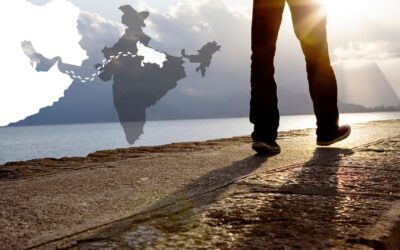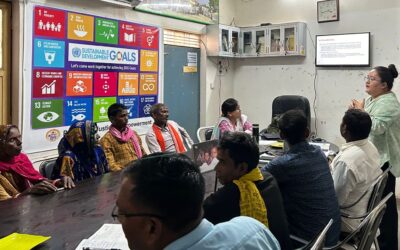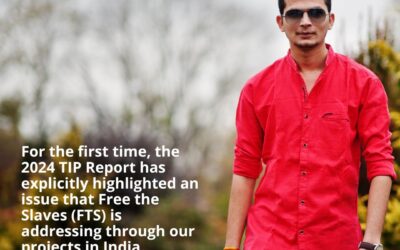2016 Trafficking Awareness Day Spotlight
More than half of the people trapped in modern slavery are women and girls. They’re exploited in bars and brothels, in homes as maids and nannies, on farms and fishing boats, and in mines and factories worldwide.
Supriya Awasthi has dedicated her life to bringing this exploitation to an end. As South Asia director for Free the Slaves, her mission is to liberate slaves and change the conditions that allow slavery to persist. She’s based in the world’s worst trafficking hot spot. India has the largest number of people in slavery today: 14 million.
Supriya’s work focuses not only on rescues, but on transforming the social, economic and political systems that make women and girls especially vulnerable to trafficking.
“It was simply a call,” Supriya says. “I always wanted work where I could tangibly see the change. And what’s touched me the most is to see the change in human lives where it was needed.”
Supriya is among the pioneers of the modern abolition movement. As the longest-serving staffer at Free the Slaves, she’s been a driving force in alerting the public to slavery’s global comeback and helping more than 10,000 slavery victims break free. She’s gone undercover with hidden cameras to help award-winning film crews expose slavery at rug factories and placement agencies for maids. She’s tracked-down children separated from their parents by circus slavers. She’s briefed Secretary of State Hillary Clinton. And, most importantly, she’s helped enslaved villagers recognize that freedom is possible if they organize to stand up for their rights.
“We work on a very complex issue. But we realize the solution lies in the communities where people are enslaved,” Supriya says. “Light is not moon. Light is not sun. Light is freedom. I want all the people who are in slavery to see this light of freedom. I want to help them realize this dream.”

Supriya in Action (clockwise from upper left): Lifting enslaved children to freedom during raid; On the floor of overnight Indian train on the way to brief Hillary Clinton; Educating Secretary of State Clinton along with other Indian activists in Kolkata; Organizing local community activists in northern India; Meeting child slavery survivors who are now in school; Mobilizing village residents to break free from slavery.
The Free the Slaves community-based model for freedom, which Supriya has helped create and field test for more than a decade, is based on identifying at-risk communities and developing the intellectual, organizational, legal, political, and physical assets needed to liberate the enslaved and overcome fundamental vulnerabilities to slavery. While no group is immune, slaves usually come from the poor, the desperate, the uneducated, the marginalized and the unprotected. Often people do not know their rights and accept forced labor. Many are unaware of risks, and they believe promises made by traffickers offering jobs far from home. In many communities people lack adequate income, education, health care and housing—as well as effective local organizations that can advocate for social benefits and legal protection. Free the Slaves help communities overcome these vulnerabilities.
The memory of one rescue in particular sticks with Supriya. It’s one of the largest raids Free the Slaves has ever prompted: 27 adults and 24 children enslaved in brutal conditions at a brick kiln.
“Freedom came on the hottest day of the season,” Supriya recalls. “At first the workers were scared, and when I arrived there was an unusual silence. Many girls and women were hiding in small huts; labor officials were unable to reassure them. When I told the workers that we could ensure their freedom and safety, they gradually began to share their appalling stories.”
They had been lured from their village by small upfront payments and promises of good work, but when they arrived at the kiln they were told they were in debt. They were forced into two years of labor without wages. They were beaten almost every day.
“As I helped one man pick up his bundle of belongings, he laughed, saying, ‘I’m running to freedom!’ The silence was broken by the excitement of the children who saw their parents rushing to get on the truck. We lifted the small children up inside. Finally the women began to smile. As I lifted those kids, I knew they would remember this day, and they would never get on another truck to be taken off to slavery,” Supriya recounts.
Learn more about Supriya’s work on the front lines of slavery, and see her in action in videos, on the Free the Slaves India webpage.



